There are hundreds of different chicken breeds to choose from these days.
Whether you’re looking for common or exotic breeds, outgoing or shy, devoted egg layers, or chickens bred for their meat, there are literally chickens to suit every taste.
But when it comes to ornamental chickens, the Polish chicken breed is at the head of the line in the pecking order.
The Polish chicken breed, with its European origins, is an ornamental chicken with a particularly striking crest of feathers. It is believed that the Polish chicken is one of the earliest domesticated birds in Europe.
Once bred for their egg-laying ability, Polish chickens are now mainly bred for their show-stopping appearance.
Discover the range of colors and different varieties this unique chicken breed offers.
Are they kept as show birds, or are they also productive egg layers? Keep reading to find out more about the Polish chicken breed.
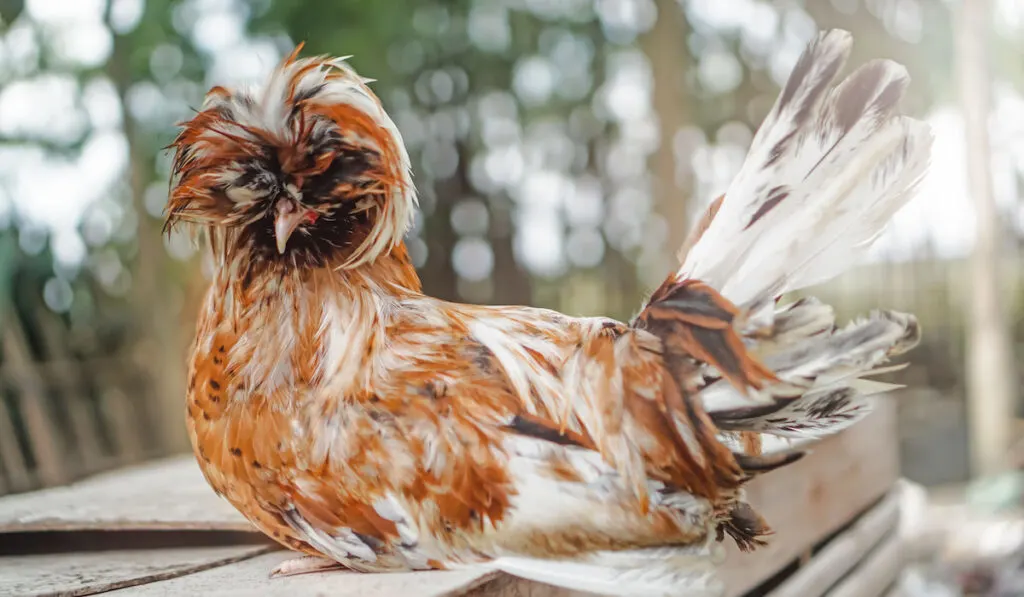
Table of Contents
Polish Chicken Key Information
| Rooster’s Weight: | 6lb |
| Hen’s Weight: | 4-5lb |
| Use: | Ornamental |
| Egg Size: | Medium-large |
| Egg Production: | 2 – 4 per week |
| Broodiness level | Rarely broody |
| Lifespan: | 8 years |
| Climate Tolerance: | Almost all climates |
| Color: | Wide variety of colors |
| Temperament: | Pleasant and peaceful nature |
| Noise Level: | Medium |
Polish Chicken Origins
Because of their name, you would be forgiven for thinking that these birds originated in Poland. But unfortunately, their origin explanation is not quite that simple.
As early as the beginning of the 14th century, Dutch and Italian artists liked to paint the ancestors of the Polish chicken due to their splendid colors and crests.
Writers of the same regions would describe these birds in great detail.
But where exactly did Polish chickens originate?
According to some historians, the Spanish created Polish chickens and brought them to the Netherlands in the 15th century.
Or there is a theory that Asian Mongols brought the ancestors of Polish chickens to Central and Eastern Europe in the Middle Ages, which is possibly their connection to Poland.
Another possibility for their name origin is that the chickens’ crest looked much like the caps Polish soldiers wore at the time.
While none of these theories have been proven, I think the mystery surrounding this wonderful breed is just another feather in their cap and adds to their unique and majestic beauty.
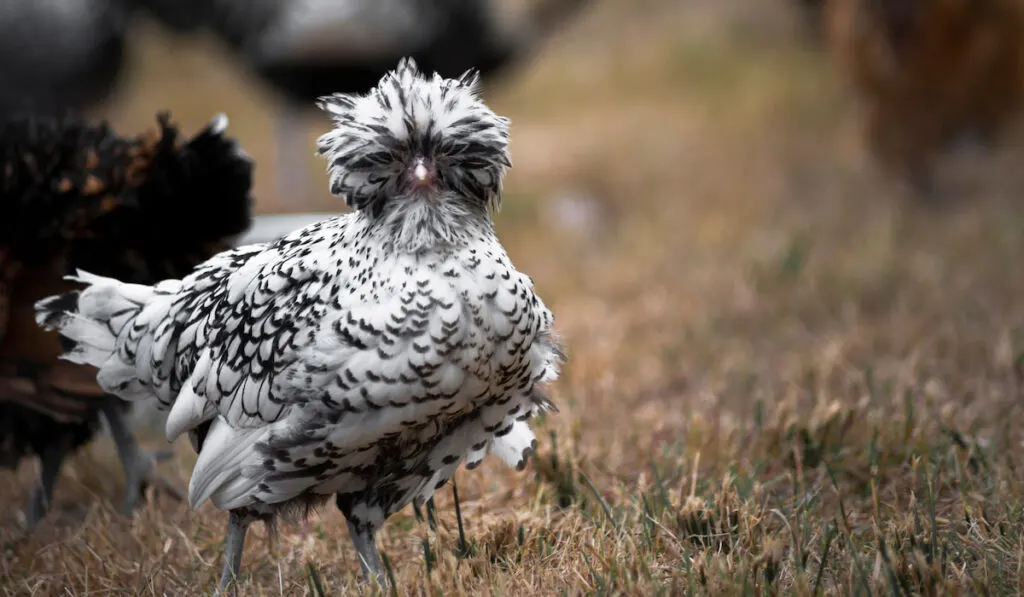
What Do Polish Chickens Look Like
Polish chickens are a fascinating breed with unique characteristics, such as fluffy crowns and fabulous feathers that distinguish them from others.
Their crowns can have a wild look or a very neat, groomed look, depending on how their crest feathers are naturally arranged.
The Polish hen has a neat “pom-pom” hairstyle, while the rooster’s head is full of loose feathers. Because of their unusual appearance, these birds are often called “pom-pom chickens” or “top hat chickens”.
In terms of size, Polish chickens are rather small and light.
They have a long, lean torso with a straight back and broad shoulders. They don’t have long wings, and the bird usually keeps them close to its body.
Polish chickens’ earlobes are white, and their combs and bells are a striking shade of crimson.
Polish roosters are easily identified by their short V-shaped combs. However, the growing feathers on its crown make it difficult to see the full comb.
The legs of Polish chickens are usually slate blue or light grey, and each leg has four toes.
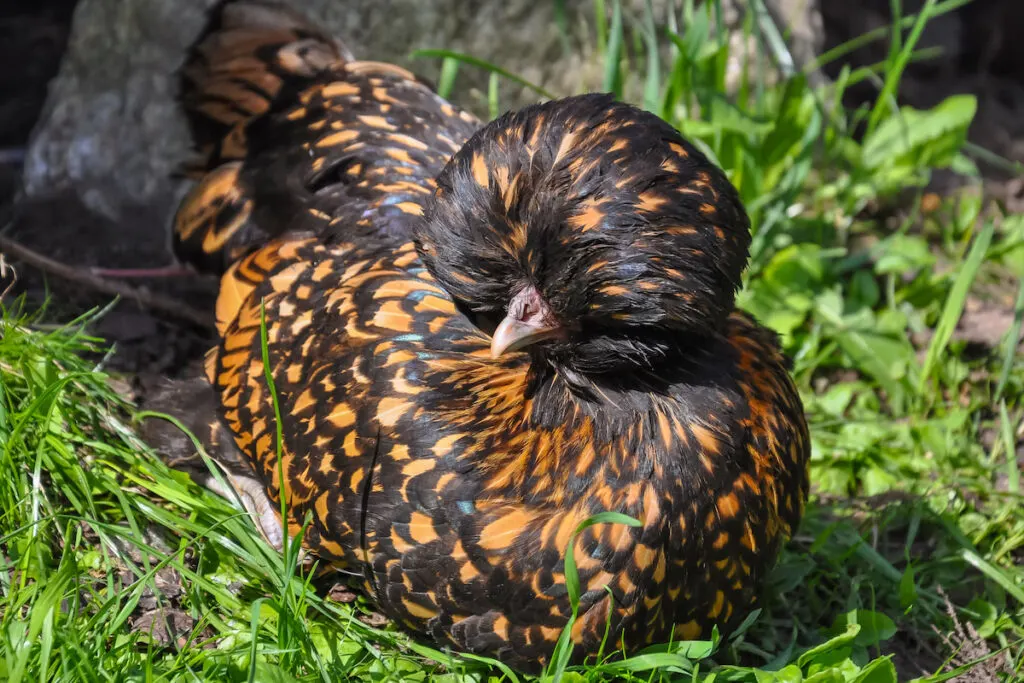
Varieties Of the Polish Chicken Breed
Polish chickens are known for their colorful feathers, and their gorgeous, fluffy appearance is thanks to the curling, twisting, and turning of their feathers rather than lying flat.
And while they are famous for their feathered heads, they can also have beards, which are simply extra feathers that grow around and behind their beaks.
In 1874, this breed was recognized by the American Poultry Association (APS).
However, it is worth mentioning that the APS has yet to acknowledge all colors of Polish chickens.
Among the recognized colors of Polish chickens are:
- Non-Bearded White Crested Black – first identified by APS in 1874
- Non-Bearded Golden – first identified by APS in 1874
- Non-Bearded Silver – first identified by APS in 1874
- Non-Bearded White – first identified by APS in 1874
- Non-Bearded Buff-Laced – first identified by APS in 1938
- Bearded Golden – first identified by APS in 1883
- Non-Bearded White-Crested Blue – first identified by APS in 1963
- Bearded Silver-Laced Polish chicken – first identified by APS in 1883
- Bearded White Polish chicken – first identified by APS in 1883
- Bearded Buff-Laced- first identified by APS in 1883
Several Polish chicken colors that are not on the American Poultry Society’s approved list include:
- Black-Tailed Red
- Black-Crested Blue
- Black-Crested Buff
- Self-Black, Harlequin
- White-Laced Red
- White-Crested Blue Splash
- White-Crested Buff
- White-Crested Dun
- Blue Polish chicken
- Chocolate
- Splash
- Tolbunt
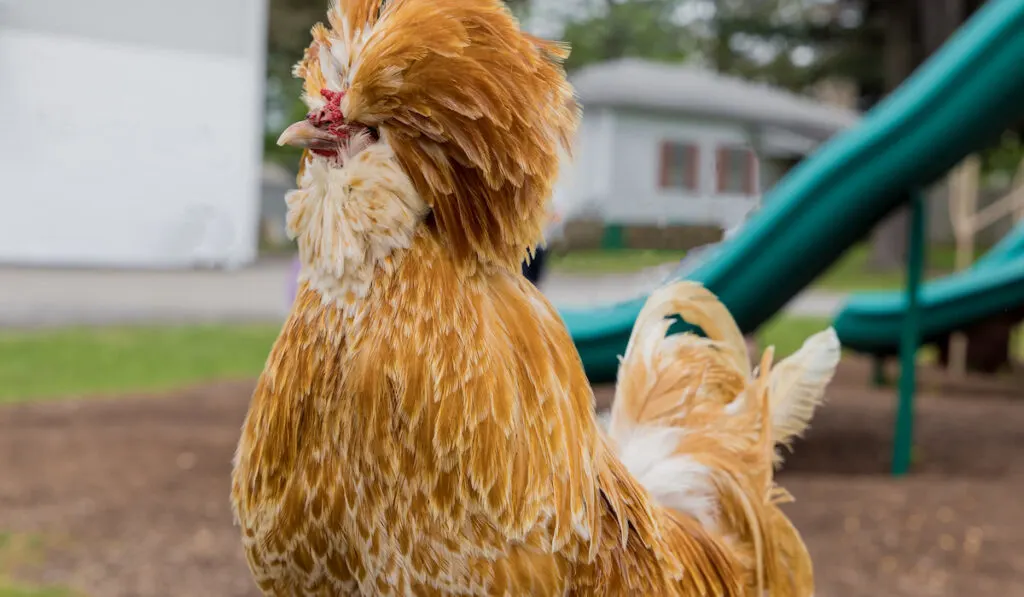
How to Tell the Difference Between a Polish Hen and a Rooster
Young male and female Polish chickens can look nearly identical, but adult birds, on the other hand, show clear differences between males and females.
Crest
The crest is more prominent and wild-looking in males, while the crests of hens resemble smooth hairstyles or pom-poms, and the tips of their feathers are rounded rather than sharp like those of roosters.
Tail Feathers
Differences between hens and roosters are clearly defined by their tails; hens have straighter, shorter tails, while roosters have long, curved ones.
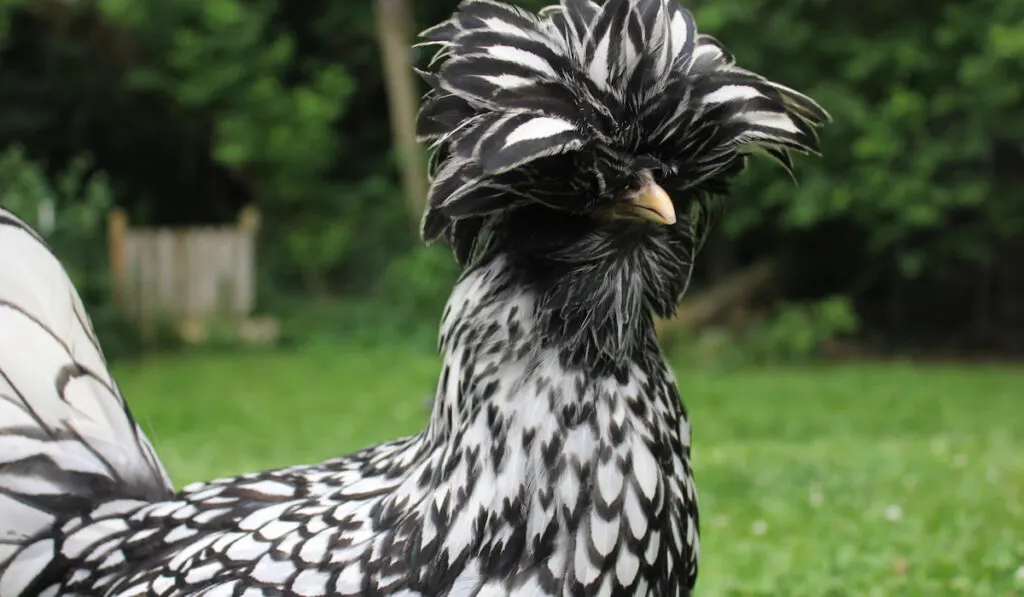
Why Would You Want to Keep Polish Chickens
Show Chicken
Today, Polish chickens are bred primarily for their ornamental value. People who collect chickens respect these birds and often include them in their flocks.
Most of the “best of” lists that include show chickens always place them at or near the top. You’re guaranteed to run into them at any poultry event.
While they often do well at smaller regional fairs, Polish chickens also fare well in top-class competitions.
Also, most show birds can be pretty expensive, but you can still get the Polish breed for a reasonable price.
Polish chickens are incredibly manageable and tame birds due to their small size and general friendliness.
With their distinctive plumage and pleasant personalities, they are ideal for those who would like to start entering a bird at shows.
Egg Laying Chicken
In the past, Polish hens were known for their great egg production. But now, with stronger rivals in the market, the Polish breed is only an average egg layer.
Between 20 and 24 weeks of age, Polish hens reach their most productive laying phase.
A hen will lay an average of 110 eggs yearly, equating to roughly 2 to 5 eggs weekly. Their eggs are typically medium in size and white.
Therefore, this is not the best breed of chicken to choose if you’re looking for a hen who lays eggs reliably and frequently.
If you want a beautiful bird that also serves practical purposes, like laying eggs, this might be the one for you.
Pet Chicken
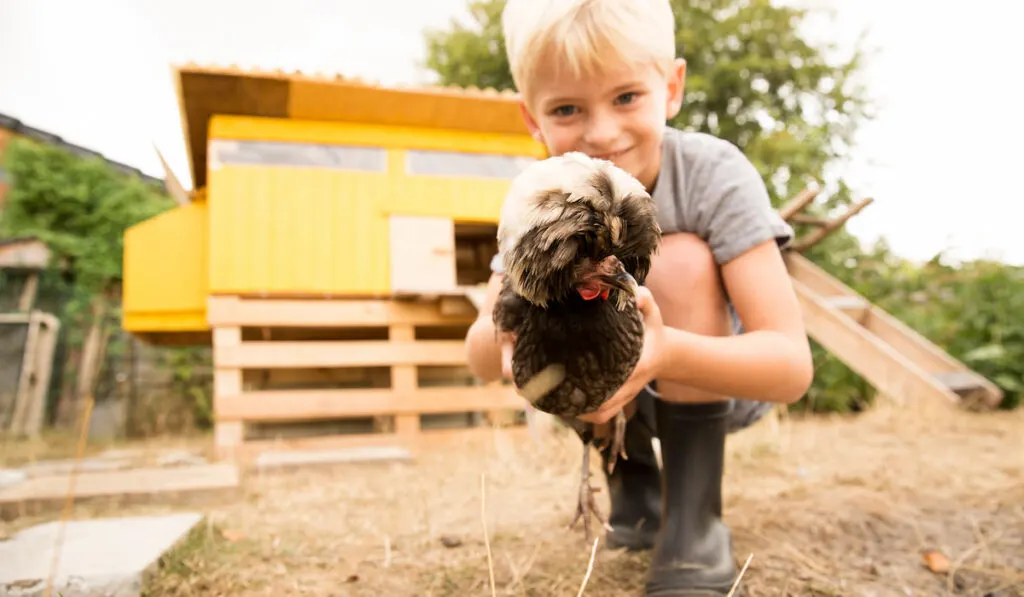
If you want to keep chickens as pets and are looking for a breed that is easy to train, calm, and well-behaved, consider a Polish chicken.
You can train them to walk by you and respond to your call with only a little effort and patience.
It’s beneficial to give these bright birds names and train them to come when called right from the start.
To top it all off, they have a peaceful demeanor, and with adult supervision, they can become trustworthy friends and companions to kids.
A Polish chicken is the way to go if you want a feathered friend to cuddle with or a charming companion to enjoy walks with.
Temperament
The Polish chicken has a reputation for being a tranquil and mild-mannered bird. Polish chickens are gentle, calm, and safe for kids when kept as pets.
It’s not uncommon for Polish chickens to be skittish and startle easily.
Their anxious demeanor is mostly caused by the fact that their feathery crests block much of their vision, leaving them more exposed to danger from potential predators.
So it’s understandable that they act timidly; if your locks kept blocking your vision, you’d be anxious, too.
It’s best to approach your chicken while making some sort of vocal contact, like talking to them or calling them out, rather than sneaking up on them completely out of the blue.
Polish chickens flourish in the hands of devoted and caring chicken lovers who don’t mind giving their birds a little extra TLC.
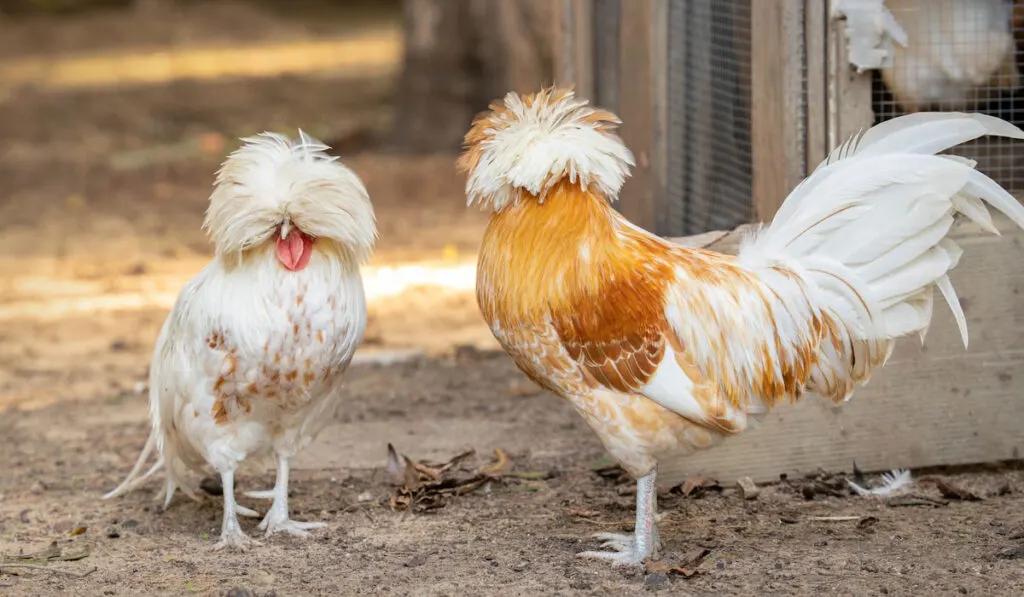
Health and Care
Below is a detailed overview of the most common challenges encountered by Polish chickens.
However, they are just as prone to illnesses and poultry problems as any other breed of chicken.
In general, providing suitable living conditions and feeding them high-quality food and fresh, clean water are the best ways to keep this breed from becoming ill or infected.
Crest Feathers
The abundance of crest feathers can lead to feather mites, lice infestations, and eye infections.
- Parasites such as lice and mites can be avoided by maintaining a regular bird treatment schedule.
- Unless the bird is being exhibited, its feathers should be trimmed if they are in the way of its eyes.
Fragile When Young
Polish chickens have a higher risk of brain damage when they’re young due to the shape of their skulls. A good peck to the head could be fatal if the chick’s bony skull has not yet fully formed.
As a result, the chicks need to be closely monitored during the first few weeks of their lives or kept separately in a different pen.
Winter Time
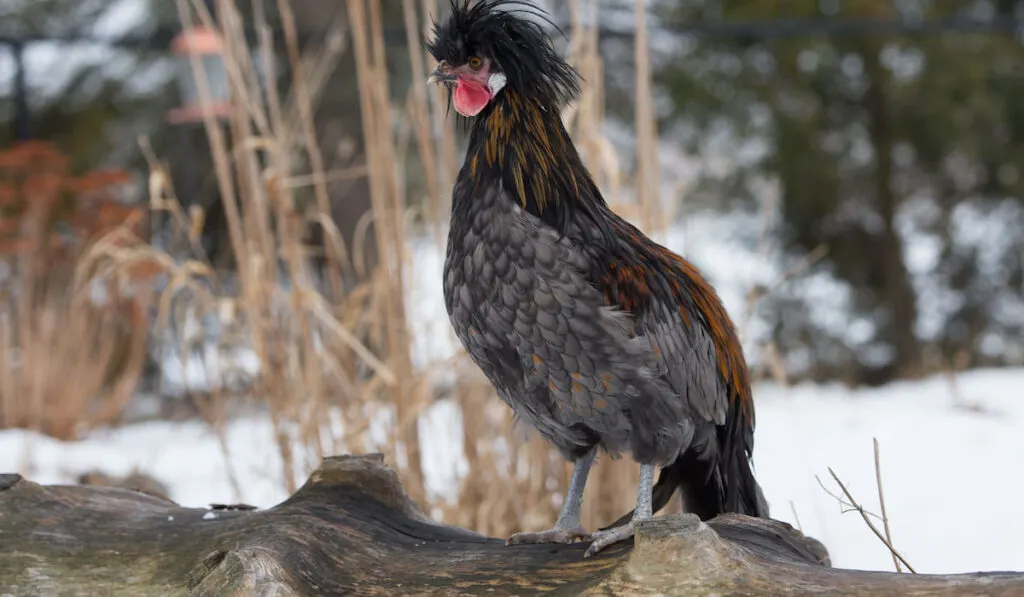
In winter, your birds need additional help to fight against weather conditions such as rain, snow, and frost. The most important thing is to give them a safe and dry area to keep warm and dry.
Polish chickens are sturdy birds that can survive in various temperatures but are less suited to wet environments.
The fluffy feathers on their bodies absorb water rapidly, so the bird’s body temperature can drop when it is chilly outside. They then become susceptible to colds and hypothermia in the worst-case scenario.
Another significant winter difficulty is the loss of heat by Polish chickens due to their unfeathered legs.
Keeping this in mind, you should ensure that your Polish chickens do not become soaked or frozen over the winter.
It’s crucial that the chicken coop has adequate ventilation and is always kept dry. However, in areas with harsh, wet winters, many breeders keep their flocks inside during this time of year.
Weather extremes strain a bird’s immune system, so it’s a good idea to supplement the water they drink with daily vitamins.
Talk to your veterinarian about supporting your chickens with supplements during cold weather.
Lice Infestations
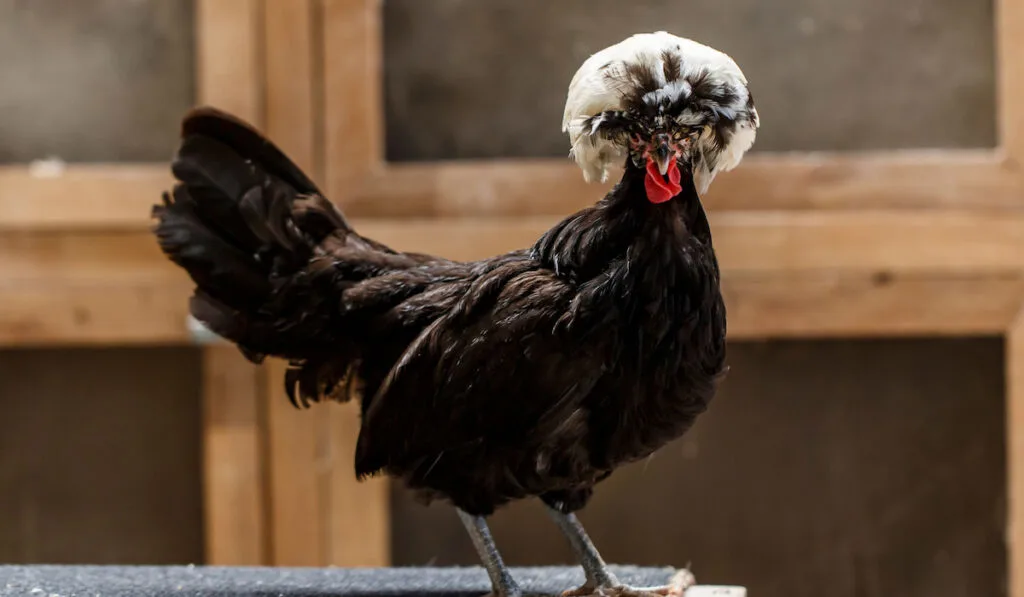
Decoratively feathered birds like Polish chickens are especially vulnerable to parasite infestations like mites and lice because of their rich, puffy covering.
Always keep an eye on your chickens and be prepared to act quickly to stop an infection from spreading quickly through the flock.
Any lice discovered should be treated as soon as possible to eliminate the problem and prevent the birds from suffering as a result.
Predators
Polish chickens are susceptible to the dangers that face all poultry.
Because of their weak range of vision, they are easy prey for silent predators and hawks, who can strike from above.
That’s why it’s important to give Polish chickens a secure outdoor enclosure, ideally under a wire roof, where they will be safe from all potential predators.
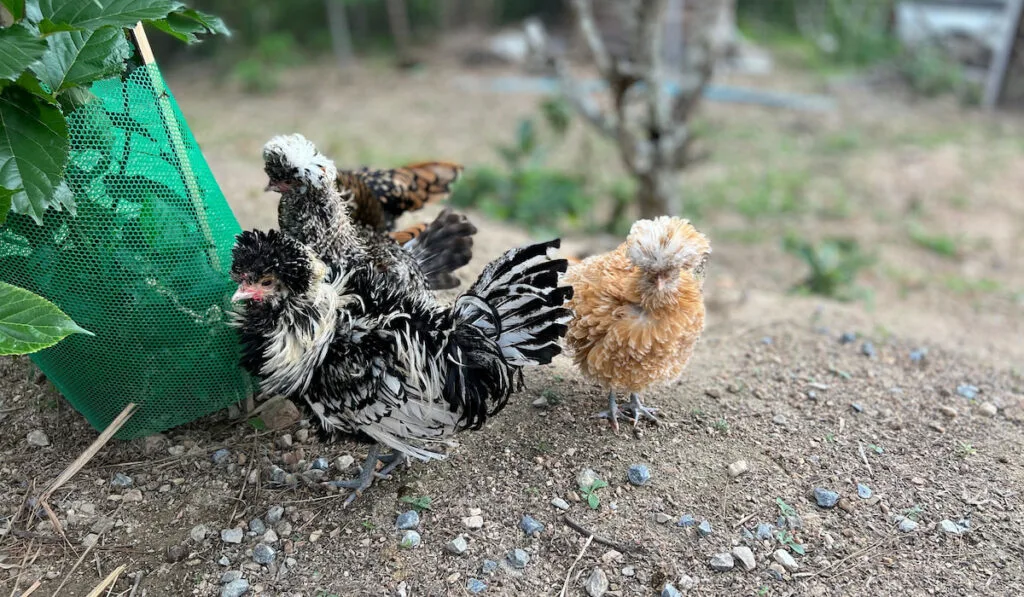
Feeding
Keeping your chickens healthy and content requires feeding them a balanced diet. Between 0 and 6 weeks, chicks require a starting crumble that is nutrient-rich and grainy enough to eat.
When they are 16 to 18 weeks old, switch them to layer pellets. As a result, this will pave the way for the first eggs to form.
You can continue feeding your chickens this diet for their entire lives, but you should try to supplement their diet with other foods also. The addition of seeds, mealworms, or even food leftovers from the kitchen can help.
Also, remember that birds do better when they are allowed some degree of freedom to search for food on their own.
Final Thoughts
Polish chickens are beautiful ornamental birds that add to any flock. They are also popular as show birds or even as pets.
The unusual design of their crest feathers sets them apart from the hundreds of other varieties of chickens.
And, with so many color variations, any chicken enthusiast will surely find one of these eye-catching creatures for themselves.
Polish chickens are a good choice for young enthusiasts just getting into the art of chicken breeding. And because of their peaceful nature and beautiful look, Polish chickens are a joy to raise.
Resources
- https://cluckin.net/polish-chicken-breed-profile.html#mcetoc_1efp9gevm3
- https://www.ecopeanut.com/polish-chicken/
- https://amerpoultryassn.com/accepted-breeds-varieties/
- https://livestockconservancy.org/heritage-breeds/heritage-breeds-list/polish-chicken/
- https://www.roysfarm.com/polish-chicken/
- https://agro4africa.com/polish-chicken/#1_Preparing_the_Polish_birds_for_shows_is_a_hard_task
